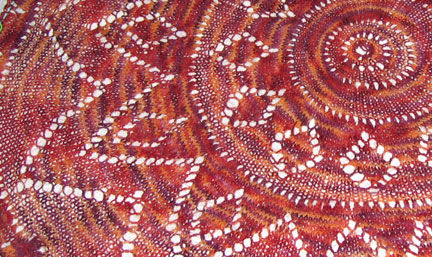Geek Knitting: Pi

When I started this article I was going to talk about the relationship of pi to knitting circular things, particularly with respect to Elizabeth Zimmerman's ground-breaking formula for her Pi Shawl.
But then I learned that her Pi Shawl (and by extension all so-called "pi knitting") actually has nothing to do with pi as a mathematical concept. And now my mind is blown.
Zimmerman's formula instead leverages a basic concept of Euclidean geometry, which is that two-dimensional shapes scale "by the same factor at the same rate." In other words, if you take a square and double the size, then the height, length, and even the diagonal length all double. If you double the circumference of a circle, then its radius and its diameter both double as well.
Pi, on the other hand, is specifically the ratio between the circumference of a circle and its diameter. A circle is always 3.14(etc etc) times longer than its diameter. If you knit a circle which is 100 stitches across, then it will be 314 stitches around.
The idea behind pi knitting is to evenly space the increases properly, so that your circular knitting will lie flat. This is more tricky than it sounds on the face of it. If you increase too fast, your knitting will ruffle and pooch out. If you increase too slowly, your knitting will pucker.
Zimmerman's pi increase formula achieves flat circular knitting by having you work an increase round at twice the number of repeats than you did before. You do the first increase round on the 3rd round, the next increase round on the 6th round, then on rounds 12, 24, 48, and so forth.
These increases (we'll call them "pi increases" even though it's not technically correct) show up in a number of wonderful circular patterns. Not just Zimmerman's original Pi Shawl, but also in patterns like:
Image courtesy Flickr/birdfarm

0 comments